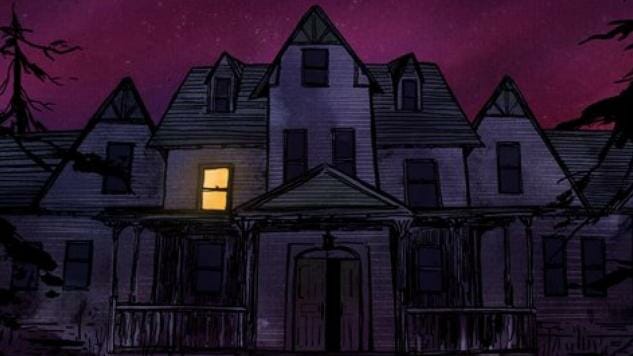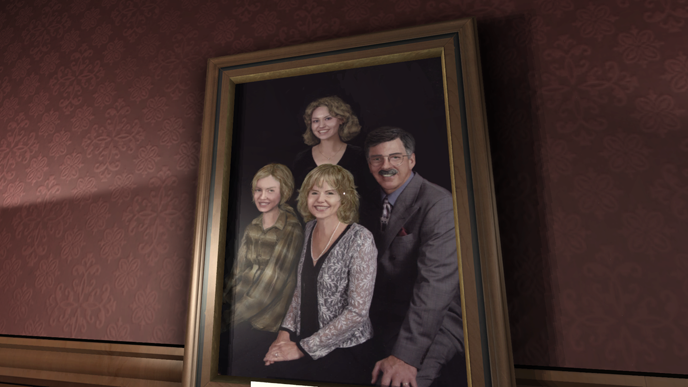The Cultural and Personal Legacy of Gone Home

Critically and commercially, a game’s success often correlates to the extent of its escapism. Science-fiction, fantasy and war are the beloved genres. Lore is forensically designed, and pored over by players. The longer a game is the more it’s worth buying. For as many hours and as totally as possible, we like games that detach us from life.
With its collectible SNES cartridges, pin-ups of Jodie Foster and Lara Flynn-Boyle and VHS tapes labelled in thick black handwriting, Gone Home, in 2013, repudiated this videogaming standard. Its token references to America, middle-class house, 1995, reflected a story of forbidden love that was “real” in a way its contemporaries’ were not. Brothers: A Tale of Two Sons had charted some kind of domestic dysfunction, but sanitized it with fairytale aesthetic. BioShock: Infinite, launched five months prior, had conceded its veracity and characters to rote game spectacle, and could only scrutinize politics down the barrel of a gun. And Papo and Yo, then only a year old, leaned so heavily into metaphor it was barely identifiable as a game about abuse. Gone Home was no documentary, but its attention to recognizable details and the quiet complexities in each of its characters reflected a rejection of pure escape.
Like the eponymous home, its climax was untidy: Samantha and Lonnie were finally together, but now out on their own and in their family’s bad graces, while Katie might have never seen her sister again. Ambiguity— sometimes cartoonish, like the red hair dye in the bathtub, sometimes earnest, like the implied mistreatment of Terry by Oscar— pervaded Gone Home. Its confidence in the player, to be compassionate and maybe smart, is also its legacy. The success of Gone Home demonstrated that the opposite of escapism could still make money.
Imitations followed. The Vanishing of Ethan Carter, Everybody’s Gone to the Rapture and Sunset are all variations on a style ratified in Gone Home. But what in 2013 played like an appeal to unfulfilled, more niche tastes later feels derivative, and these games, by trying to copy Gone Home’s success rather than its example, miss the idiosyncrasy that made it interesting in the first place. Carter, Rapture and Sunset take “abandoned locale looking through off-screen characters’ personal belongings occasional mawkishness” as Gone Home’s winning formula, missing, vitally, “be original.”
Of course, Gone Home owed debts to BioShock, Dear Esther and the intensely condescending Stanley Parable, but just by virtue of being about two gay women, it was using old mechanics to say something new; despite featuring respectively a black woman, a black woman and a child who dies at the end as their protagonists, Sunset, Rapture and Carter seem generally content to rehash rather than build upon Gone Home, and what might have been better understood as a new style of game, to build upon, has unfortunately become a kind of model or sub-genre in-and-of-itself. Gone Home’s legacy is also a canon of samey, lesser cash-ins. It did such great business and had so many advocating critics, myself included, that successive game-makers wanted to copy it. So dogmatic is that pursuit, most of them don’t recognize, or just leave in Gone Home’s biggest flaw— it’s difficult to count in my head all the games today that claim to be about human relationships but don’t contain a single on-screen character.
On the contrary, two of the best games of the past two years, Frictional’s SOMA and Question’s The Magic Circle, are both by-products of Gone Home and successfully build on its foundation. In the former, you explore an abandoned location, gleaning facts and fables about the previous occupants via their left-behind possessions. But it nevertheless features an extended, maybe ten-minute-long dialogue exchange between you and a very — in fact, excruciatingly — human character. In the latter, you also traverse a forgotten, dead world, but there is a great sense of activity. Its creators come, go and bicker; the pseudo-apocalyptic event that will drive them finally away hasn’t happened yet, and rather than pick up its remnants, you experience the game’s human tragedy in real-time. Formally, these games owe something to Gone Home: they’re all wordy, non-violent and fascinated by a dynamic between living people and inanimate things.
Spiritually (if you can attach to a videogame something so grand-sounding as “spirit”) they’re indebted, also. If Gone Home helped demonstrate that different kinds of games were desired, and there was a market out there for love stories, character drama and at least mild tragedy, then it compelled both SOMA’s and The Magic Circle’s intensely bitter endings. These two games hit harder than Gone Home. They took its direction, to tell stories about people and pain, and did not blanch. They were also flags in the ground. When they released, they seemed delineative of some kind of breakthrough, either in videogame writing or design or both, and to that extent they embodied something else about The Fullbright Company’s opus: Gone Home, in 2013, was a thrill to write about, and seemed part of an encroaching wave of livelier discussion and generally better games.
Between 2012 and 2013, The Walking Dead, Dishonored, XCOM: Enemy Unknown, Hotline Miami, Spec Ops: The Line, Kentucky Route Zero, BioShock: Infinite, The Last of Us, Papers, Please, Actual Sunlight and Gone Home were all released, and it seemed like each had something to say, or at least reflect, about gaming culture. Perhaps I look back on this period too favorably, because it’s when I first started writing about games, and I was grateful and naïve, and it probably all seemed more amazing to me than it actually was. But I maintain there was something in the air. Popular games were talking about sex, violence and politics; reviewers were doing the same. When I played Gone Home, it felt like one of the most cogent examples of these new trends and discussions, emerging among videogames. It seemed safe, as in not-at-all-silly, to describe this videogame as “adult” and “observational.” And for the amateur critic that was emboldening. I felt like I was on the crest of something, and every week there was almost febrile discussion, because games like Gone Home were opening it right up. This was an anything-could-happen kind of period. For me personally, the legacy of Gone Home is longing nowadays for more of that brio and atmosphere, some game or even litany of games to reinvigorate my sense of doing this job for more than the money.
Maybe Tacoma will be it. After a dull 2017, maybe Fullbright’s second game will spark or at least tinder the commercial and critical imagination. I’d like to think so. Games are often valued relative to their escapism— if like Gone Home, Tacoma nudges up standards of narrative, assumed audience and written discussion, it’ll be a small escape from the humdrum videogames seem to have recently fallen into, and I’ll remember it very fondly.
Ed Smith is a writer from the UK. You can follow him on Twitter @mostsincerelyed and find more of his work at bulletpointsmonthly.com.


